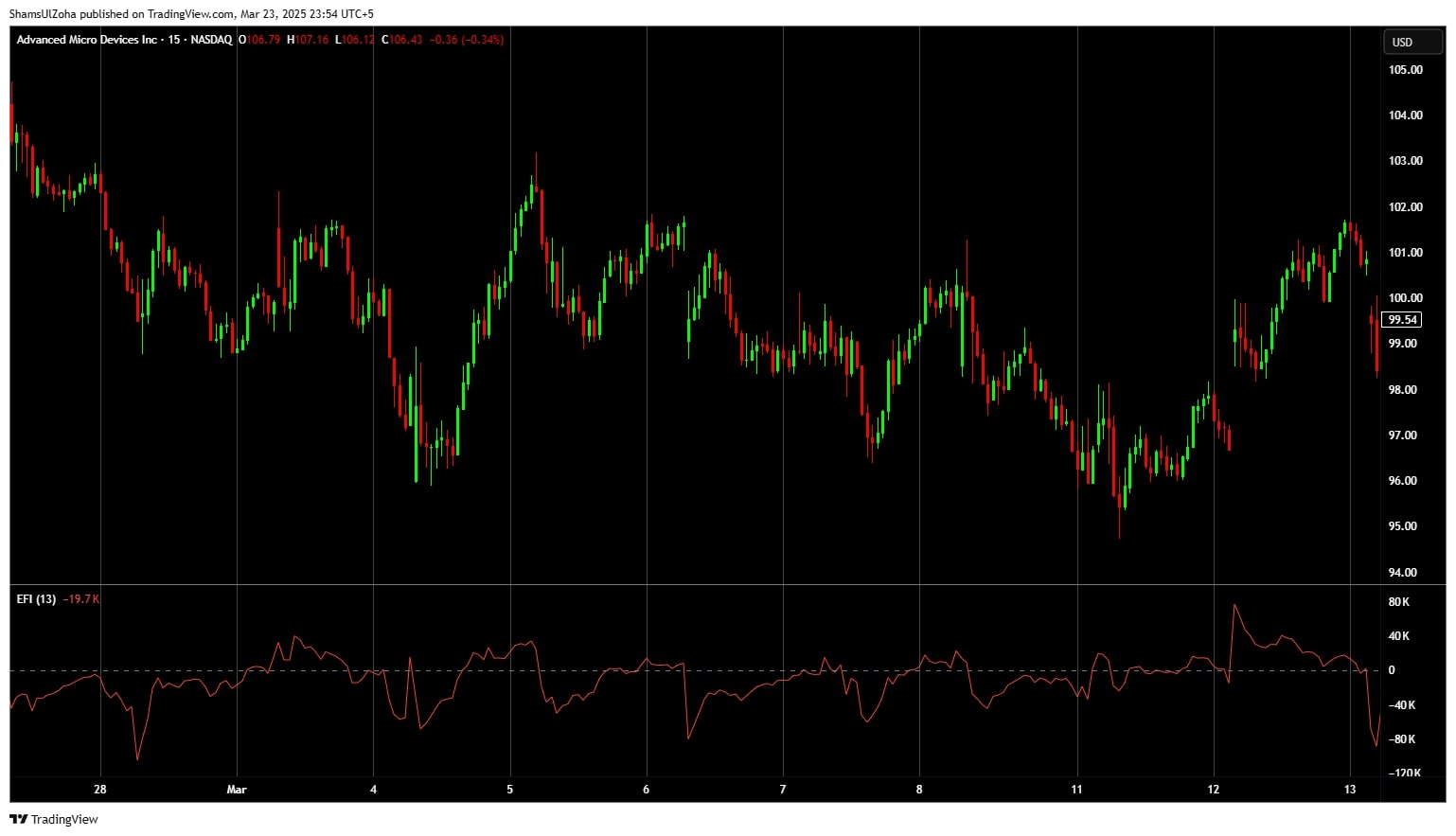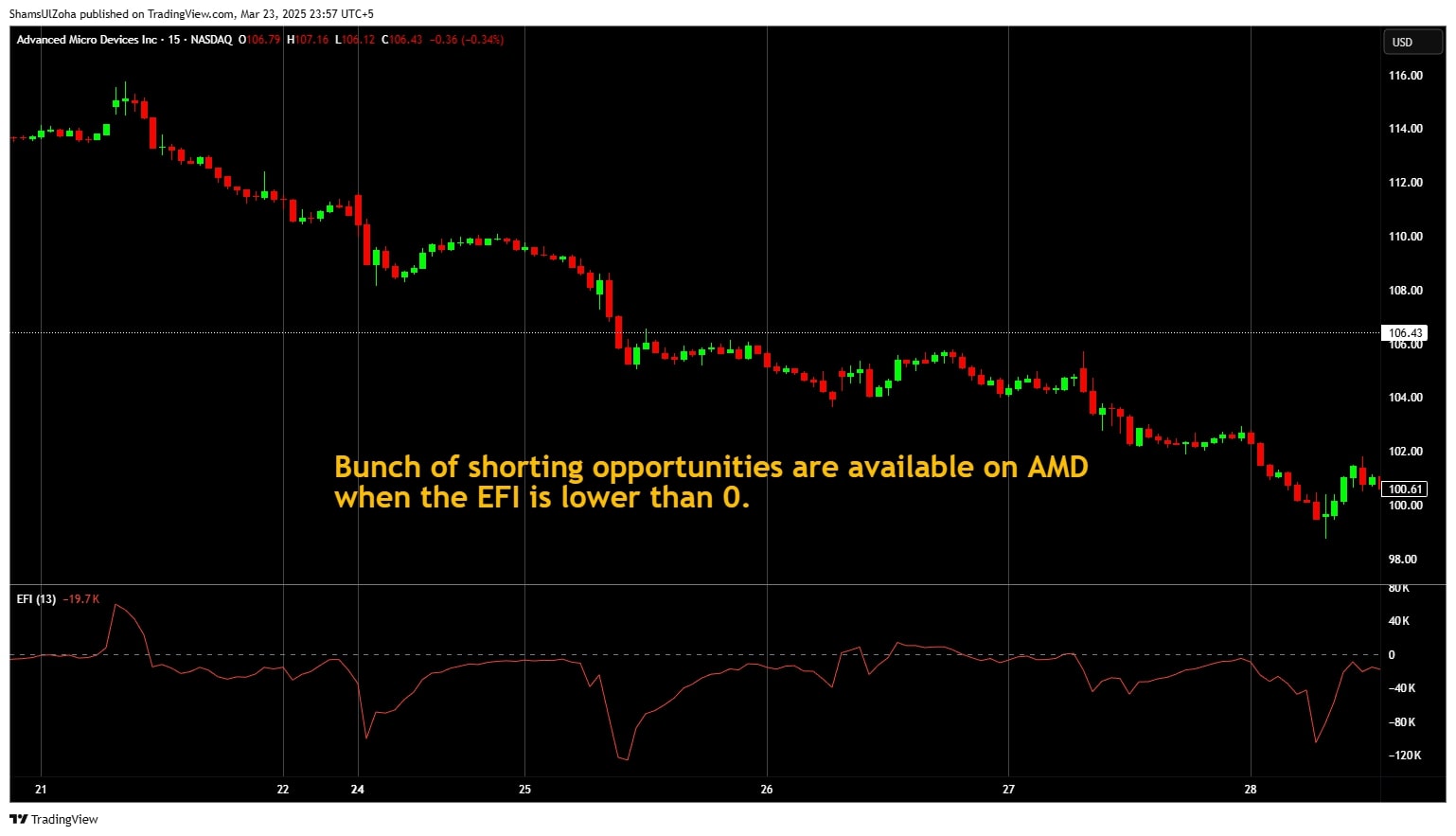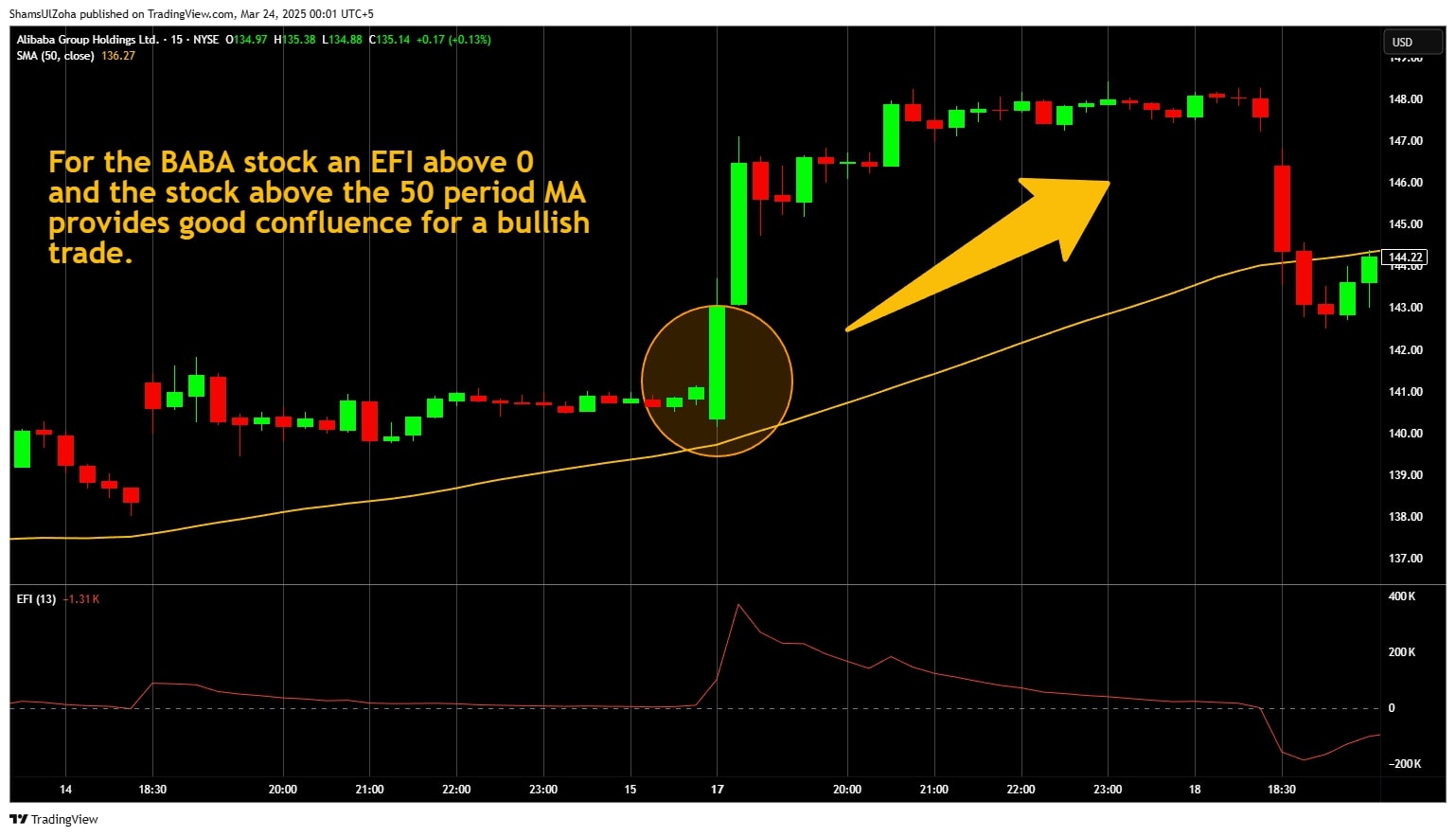The Elder’s Force Index (EFI) is a widely used trading indicator developed by Alexander Elder to measure buying and selling pressure in the market. By combining price movement with volume, this technical analysis tool helps traders determine the strength of a trend and identify potential trading opportunities.
Since the index is a valuable technical indicator, it provides insights into future price movements and potential trend reversals. Traders can identify potential shifts in momentum and use EFI to confirm signals from other technical indicators, such as the relative strength index (RSI) and moving averages.
The Force Index works like a speedometer for price action, it measures price change and trading volume to help traders determine whether a move has significant market support or is just noise.

How Elder’s Force Index Works in Trading
The Elder Force Index is calculated using the formula:
EFI = (Current price − Previous price) × Volume
This index calculation helps traders identify potential trend reversals by quantifying buying and selling pressure over time.
-
Positive EFI values indicate an upward trend, suggesting strong buying pressure.
-
Negative EFI values indicate a downward trend, signaling increased selling pressure in the market.
Key Factors
-
Price Movement: The difference between the price of an asset today and its previous price defines the trend direction.
-
Volume: When combined with price action, volume confirms whether a move has strength or is likely to fail.
By analyzing these elements, traders can identify trends and improve their trading strategies.
Example Usage
Traders use the EFI to identify trends and reversals or confirm a market move’s strength.
For instance:
- A positive EFI above zero suggests bullish strength, signaling a potential buying opportunity.
- A negative EFI below zero signals bearish strength, indicating potential selling or shorting opportunities.

To enhance its accuracy, the index can be used with indicators like the RSI, trend lines, and support and resistance levels.
Example Scanners
- “TS: Elder Force Index Bull” scanner identifies stocks with a rising EFI, suggesting strong bullish activity.
- “TS: Elder Force Index Bear” scanner flags stocks with a falling EFI, indicating increasing bearish pressure.
Systematic Trading Perspective: Why Rules Matter
Systematic traders rely on technical indicators like the Elder Force Index to create trading signals based on mathematical calculations derived from historical data. Instead of relying on emotions, they use trading strategies that are:
-
Backtested on historical price charts to ensure reliability.
-
Rigorously tested to refine entry and exit points.
-
Designed to consider momentum and market strength.
An example strategy may look something like:
-
Buy Signal: An upward trend is signaled when EFI crosses above zero.
-
Sell Signal: When EFI crosses below zero, confirming a downward trend.
These trading strategies help traders make informed decisions and avoid false signals.
Challenges of Using Elder’s Force Index in a Trading System
While the Force Index is a valuable technical indicator, it has some limitations:
1. Market Noise in Sideways Trends
In oversold conditions in the market, the EFI may generate false signals, making it harder to determine trend direction.
2. Lagging Indicator
Since the EFI relies on past price information, it may help traders identify trends after they’ve already begun.
3. False Breakouts
The Force Index can misinterpret chart patterns, leading to premature buying and selling decisions.
How to Improve Accuracy
-
Combine EFI with RSI: Using the relative strength index alongside EFI provides confirmation.
-
Use the index in conjunction with moving averages to smooth signals.
-
Adjust parameters based on market conditions to avoid overbought and oversold conditions.

Actionable Tips for Using Elder’s Force Index Effectively
To effectively use the Elder’s Force Index in trading, consider the following tips:
1. Trend Identification
EFI can help you confirm the direction of a trend. For example, a longer-term 13-period EMA can be used to track whether bulls or bears are in control of the market. When the 13-period EFI crosses above zero, it signals sustained bullish momentum.
2. Spotting Divergences
Look for divergences between EFI and price action:
-
Bullish Divergence: The EFI forms a higher low while the price of an asset forms a lower low, indicating a potential trading opportunity.
-
Bearish Divergence: The EFI forms a lower high while the price forms a higher high, signaling a potential trend change.
3. Using Moving Averages
Smooth the EFI with an exponential moving average to reduce noise and clarify trends. For example, use a short-term moving average for intraday trading or a long-term moving average to capture broader market trends.
4. Entry and Exit Points
- Buy: Enter when EFI crosses above the zero line or its moving average, confirming a bullish market.
- Sell: Exit when the EFI crosses below the zero line or its moving average, signaling potential reversal or weakening momentum.
5. Avoid Over-Optimization
Ensure the indicator is stable and robust across a wide range of parameter values and is verified using out of sample data to ensure confidence when used for future trading signals.
Conclusion & Next Steps
Backtesting the Elder Force Index without normalization can be misleading because the raw values are heavily influenced by changes in price level and volume over time, as well as differences across instruments. This makes it difficult to distinguish whether a large EFI reading reflects genuine buying or selling pressure or simply results from higher nominal prices or increased trading activity. However, normalizing the EFI—such as by converting it to a z-score or expressing it relative to average volume—may dilute the original intent of the indicator. Elder designed the Force Index to capture raw emotional intensity in the market, reflected in unadjusted price and volume surges. By smoothing or scaling these values, some of that raw intensity may be lost, potentially weakening the edge the indicator was meant to exploit. Still, if we want to extract anything meaningful that we can reasonably trust in a backtest or apply moving forward, normalization is essential.
By following these guidelines, traders can gain a deeper understanding of market momentum and make more informed decisions. For those looking to master the Elder Force Index and other advanced trading indicators, The Trader Success System offers comprehensive training and guidance. Remember – You are only one trading system away!


